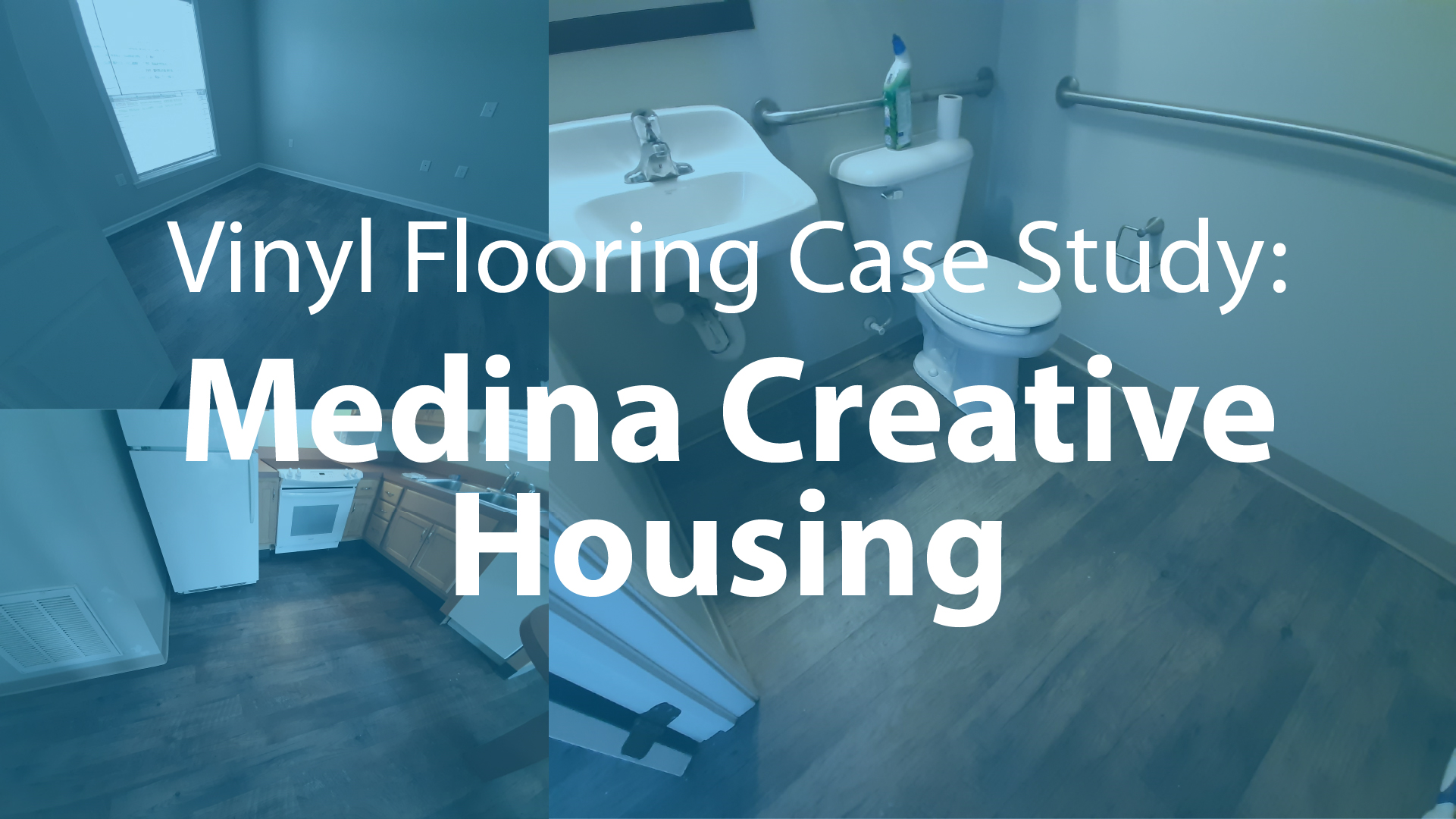
For Some, Vinyl Flooring Is Life Changing
We don’t talk enough about the social aspect of design—but we really should.
Medina Creative Housing didn’t opt for vinyl flooring because of its aesthetics or its affordability. For its residents, vinyl flooring is literally life changing.
Medina Creative Housing offers housing and services for people with developmental disabilities. Their homes enable people in Medina County, Ohio, to live independently (with support services) in affordable, accessible, and safe neighborhoods.
“Quite simply, vinyl allows for barrier-free living,” says Medina Executive Director Dianne DePasquale-Hagerty.
There are two important ways that vinyl changes lives: (1) safety, and (2) independence.
“If we had our way, we would replace all our flooring because vinyl flooring has proven to be life changing.” –Dianne DePasquale-Hagerty, Executive Director/CEO of Medina Creative Housing
From a safety perspective, vinyl flooring provides a seamless surface to walk on and navigate across. So a person with a cane, for example, doesn’t have to transition across different surfaces. Nor does someone who might have equilibrium problems due to a pharmaceutical regimen or a medical condition need to worry about tripping on frayed or uneven carpet or falling onto hard tiles.
“Vinyl flooring is often found in settings such as healthcare facilities and retirement communities because it just makes sense to support ambulation and mobility for patient and resident care populations ,” said Jane Rohde, Principal of JSR Associates, a healthcare and senior living design consultant firm. “Providing level transitions between resilient flooring and vinyl backed carpet can support a residential feeling that reduces fall risk for vulnerable populations. Through careful planning and procurement of vinyl flooring, communities can create spaces that allow people to safely navigate through their living environment.”
Vinyl flooring is also really easy to disinfect, something that has become a critical aspect of property maintenance for Medina Creative Housing since the coronavirus outbreak. “Our residents and staff are especially vulnerable during this pandemic,” says DePasquale-Hagerty. “It would be catastrophic to our ability to provide necessary services and safe living spaces if we had any concerns about viral material spreading on common surfaces in our facilities, so we must maintain them to a high degree. Vinyl flooring allows us to do that easily with chemical disinfectants, and without expensive and disruptive steam cleaning.”
Along with safety, vinyl flooring enables greater independence. Residents in wheelchairs can more easily mop the floors in their units and maintain their living spaces, which helps them to develop skills that enable them to enter the workforce. Similarly, the ease of moving around on vinyl floors makes cooking, washing, and other activities of daily living easier for residents. Vinyl floors in workplaces can help people with certain disabilities be able to work safely—a key to economic independence.
Here’s why vinyl flooring promotes barrier-free living.
DePasquale-Hagerty points out that vinyl creates seamless flooring without nooks and seams and the transitions that people so often encounter and have to navigate.
According to DePasquale-Hagerty, “you can’t have a better product than vinyl flooring from an accessibility standpoint.” She points out that, in contrast, tile and carpeting come with major problems:
- Tile may be aesthetically pleasing, says DePasquale-Hagerty, but it’s difficult to maintain. The surface is uneven and keeping the grout clean is tough. She adds that it’s prone to mildew in bathroom applications. It’s also often slippery when wet, which is a falling hazard.
- Carpet is much harder to keep clean and safe, says DePasquale-Hagerty. Residents come in with boots, wheelchairs, and walkers, and the carpets get stained. They also become frayed, the transition strips come loose, and the carpet unravels, creating a very challenging surface for her residents to walk on.
Accessibility is critical to sustainable communities.
Manufacturers, distributors, and installers should think beyond the product itself to the benefit that they are providing. And it’s not just in residential facilities that people need barrier-free movement. They need it everywhere: In grocery stores. In laundromats. In movie theaters. In medical buildings. In courthouses.
“Resilience is one of the key attributes we use to describe vinyl flooring, which often lends itself to being inherently sustainable,” said Dhruv Raina, Product Stewardship Director at Tarkett USA. “But sustainability is so much broader than simply lasting a long time. Vinyl makes our communities more accessible and helps bring people together in the most literal sense.”
This concept of social good lies at the heart of sustainability. Though the “social” aspect of sustainability is perhaps the least understood, it’s vital. Indeed, the UN’s Sustainable Development Goal #11 is about “making cities and human settlements inclusive, safe, resilient, and sustainable.” And we can’t achieve this objective if some people are left behind.
DePasquale-Hagerty stresses that “the public includes people with disabilities.” That means that designers should accommodate their designs to create the best experience possible—and a safe experience for everyone. The mission of Medina Creative Housing is to get the people it serves truly integrated into the community. In order to achieve that, the spaces in that community have to be accessible. Vinyl flooring helps make that happen.
